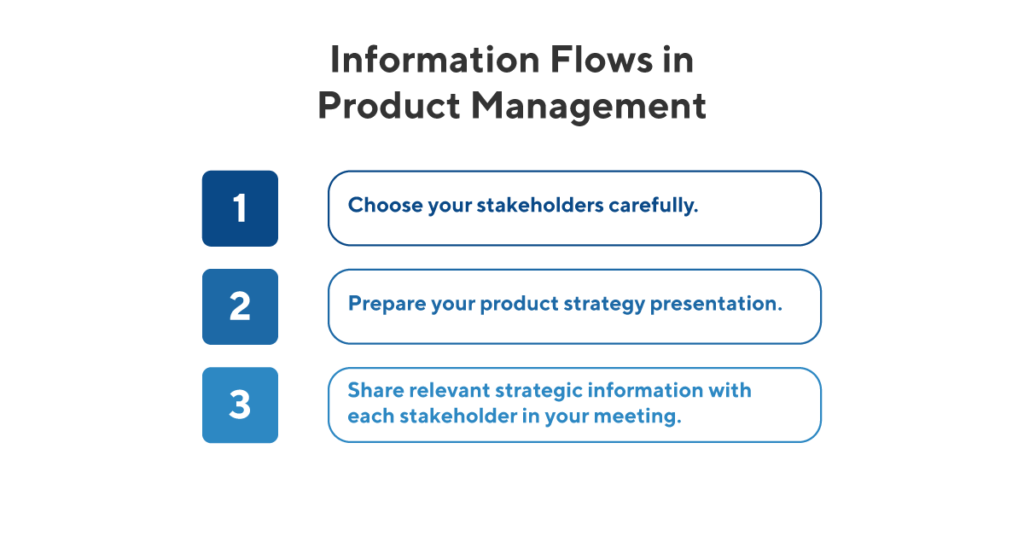What is the Definition of Information Flows in Product Management?
The success of any product depends on coordination among several departments across the company. In product management, information flow refers to a two-step process for creating a shared understanding of product strategy. In the first step, the product leader gathers various stakeholders to discuss the goals and plans for the product. The second step is for these stakeholders to share this information with their teams.
When and Why is Information Flow Process Relevant?
In a large organization, each department tends to focus inward on its responsibilities, priorities, and internal metrics. As a result, communication among departments becomes less frequent.
As a study from Sweden’s Chalmers University of Technology explains, a lack of information flow across product teams leads to teams working with inaccurate or outdated information, and sometimes in ways that are counterproductive to their colleagues’ work.
Without a shared understanding of the organization’s priorities, the product leader can’t ensure everyone works toward the same goals.
Another reason product leaders use this type of information flow is that a top-down product strategy is the most effective approach. “Top-down” in this context refers to identifying a product vision and strategy before prioritizing features.
Using this information flow process, product managers and product leaders can communicate the vision for the product to the entire company before anyone begins working on tactical details.
How Can Product Leaders Use the Information Flow Process?
Step 1: Choose your stakeholders carefully.
Product leaders must first decide which stakeholders to invite to the strategy discussion. These people should represent all areas of the organization that will have a role in developing, promoting, delivering, and supporting the product. But the product team must also be careful not to invite too many people. With a crowd involved, this can confuse and clutter the discussion.
Step 2: Prepare your product strategy presentation.
The ideal tool to support your presentation will be a product roadmap. A product roadmap is a high-level, visual overview of your objectives and plans for the product. The roadmap helps you illustrate the “why” behind the product plans, priorities, and timelines you have chosen. You will want to use a purpose-built roadmap app because this will allow you to quickly switch between views and levels of detail during your stakeholder presentation.
Step 3: Share relevant strategic information with each stakeholder in your meeting.
By this point, you’ll have gathered the right stakeholders to review your product’s strategy. Be sure to then include relevant strategic detail for each stakeholders to bring back to their respective teams. The head of marketing, for example, will want to share with the marketing and public relations teams the product’s unique selling proposition and other crucial marketing messages. The stakeholder representing the UX and design teams will share an overview of your product’s user personas, so they understand why you’re asking them to build this specific user experience.

Are Information Flows Mission-Critical for Product Leaders?
As an organization grows, many things become more challenging. Specifically, making sure everyone in the company knows how their work supports the business’s broader product strategy. But for a product to succeed in the market, this information flow to everyone on the team is critical.
The process above lets product leaders and product managers disseminate key strategic details across the whole company in the most effective way possible.

